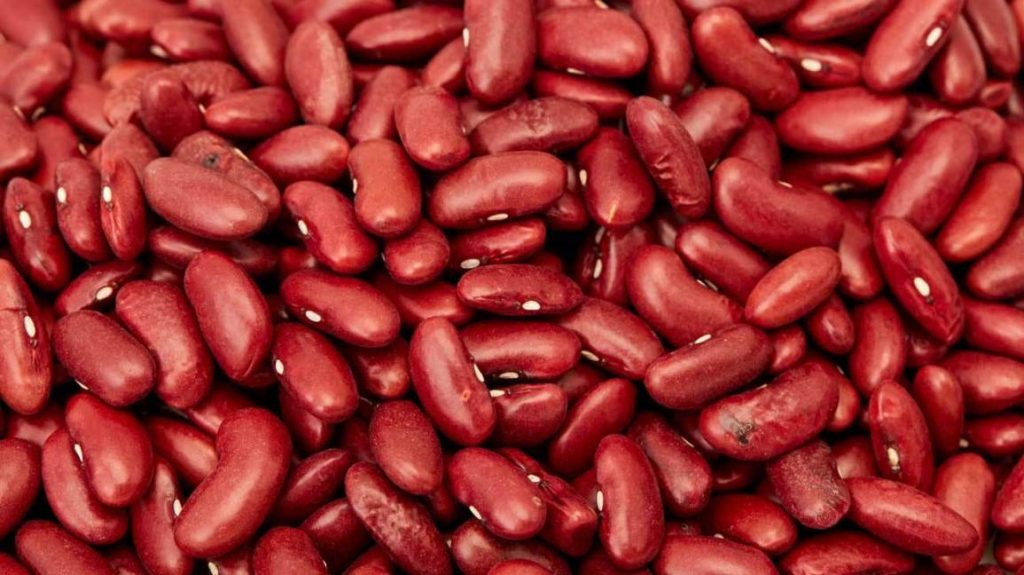

23rd August 2020
Kidney Beans Nutrition Helps Fight Diabetes, Heart Disease & Even Some Cancers
Name for their close visual resemblance in color and shape to kidneys, kidney beans are widely consumed and produced across the globe, and like cannellini beans or adzuki beans, they’re a common addition to chili and other delicious meals. Low in fat and rich in complex carbohydrates, minerals, proteins and vitamins, kidney beans nutrition has been linked to reduced risk of various of cancers, heart disease and diabetes.
That’s not all when it comes to kidney beans nutrition either. Thanks to their fiber and abundance of nutrients, kidney beans also help with your waistline. Let’s find out all the amazing benefits of kidney beans nutrition.
Benefits of Kidney Beans Nutrition
1. Lowers Cholesterol and Reduces Heart Disease Risk
In the United States, one out of every three deaths is due to cardiovascular disease. Studies have shown that risk factor modifications can decrease the prevalence of cardiovascular diseases, including ischemic heart disease and strokes. Diet is an important modifiable risk factor for many types of cardiovascular diseases, and bean consumption, including kidney beans, has been shown to reduce risk factors for cardiovascular issues. (1)
In a meta-analysis of nine studies totaling 238 participants, bean consumption resulted in decreased LDL cholesterollevels without affecting HDL cholesterol. The high soluble content in kidney beans is thought to reduce LDL and increase the excretion of bile acid.
Additionally, colonic fermentation of soluble fiber produces short-chain fatty acids, such as butyrate and propionate, which may help decrease hepatic cholesterol synthesis, thus decreasing circulating LDL cholesterol levels. Lastly, the consumption of beans, may decrease cardiovascular diseases as well as other diseases overall by reducing inflammation. There has been both clinical and epidemiologic studies showing that bean consumption reduces C-reactive protein concentrations. (2)
2. Controls Blood Sugar
Kidney bean pulses alone lowered insulin and fasting blood glucose in a meta-analysis of 41 clinical studies. Additionally, pulses in high-fiber diets lowered fasting blood glucose and glycosylated blood proteins, while pulses in low glycemic diets lowered glycosylated blood proteins, measured as hemoglobin A1C or fructosamine.
The bean properties, their high fiber content, low glycemic index, antioxidant effects and polyphenol content possibly contributed to the effects on glycemic control. These properties may have protected these subjects against the development of type 2 diabetes thanks in part to their ability to help maintain normal blood sugar. (3)
3. Combats Diabetes
When replacing other carbohydrate-rich foods, clinical trials consistently show that beans reduce postprandial glucose elevations in both diabetic and nondiabetic participants.
Kidney beans generally have a much lower glycemic indexcompared with other carbohydrate-rich foods, likely a result of their fiber and resistant starch content. The glycemic index of beans ranges from 29 to 38 compared with 50 for brown riceand 55 for rolled oats.
When participants with diabetes were instructed to increase their intake of legumes by at least one cup per day, glycated hemoglobin (Hb A1c) decreased by 0.5 percent compared with a decrease of 0.3 percent when supplemented with only wheat fiber. Changes in glycated hemoglobin concentrations as little as 1 percent are associated with as much as a 15 percent to 18 percent risk reduction of ischemic heart disease in people with diabetes. (4)
Not only does kidney beans nutrition help prevent heart disease in diabetics, but thanks to its low glycemic load and effects on blood sugar, kidney beans nutrition can also help prevent or manage type 2 diabetes itself. (5) This makes these wonderful beans a must in any diabetic diet plan.
4. Helps Treat and Prevent Certain Cancers
Colorectal cancer is the third most common cancer in terms of incidence and mortality in women in the United States and the second leading cause in men. During 2017, it’s expected to cause about 50,260 deaths.
In human subjects, high intake of flavonols, which are of greater concentrations in beans, has been inversely related to advanced adenomatous polyps recurrence. The five most consumed type of dry beans in this study, in descending order, were baked beans, kidney beans, pinto beans, lima beans and navy beans. Compared with subjects with low intake of dry beans, participants with the highest bean consumption had a significantly high reduction in the recurrence of advanced adenomas by 65 percent. (6)
Further research published in the International Journal of Biological Macromolecules found that “white kidney bean lectin exerts anti-proliferative and apoptotic effects on cancer cells.” (7) In general, beans are strong cancer-fighting foods, and kidney beans nutrition has demonstrated defense against several forms of cancer.
5. Aids in Weight loss
Obesity has more than doubled since 1980 worldwide. In 2014, more than 1.9 billion adults, 18 and older, were overweight. Of these, over 600 million were obese, leading many to seek ways to treat obesity naturally. (8)
Diet and exercise are key when it comes to keeping excess weight under control. Because of their ability to prevent starch absorption and breakdown, alpha amylase inhibitors have been used for weight loss. Alpha-amylase inhibitors are present in beans and grains, including rice and wheat. (9)
The greatest body of research has gone into isolating and purifying alpha-amylase inhibitors from white kidney beanextracts. A double-blinded, placebo-controlled, randomized study of these kidney beans extracts included 60 slightly overweight participants (five to 15 kilograms overweight). It was required of the participants to maintain a stable weight for the past six months and undergo a two-week, single-blinded, run-in period before randomization. The participants took one tablet of the active extracts or placebo per day for 30 consecutive days before a meal rich in carbohydrates. The active tablet consisted of 445 milligrams of the extract and 0.5 milligrams of chromium picolinate.
After 30 days, the active group had a significant reduction in adipose tissue, BMI, body weight and fat mass. In addition, waist, hip and thigh circumference reduced while maintaining lean body mass. On average, the active group lost 6.45 pounds in 30 days as compared to an average of 0.35 pounds in the placebo group. (10)

TO RECEIVE NEWS NOTIFICATIONS And Covid NEWS VIA WHATS APP PLEASE SAVE OUR NUMBER AND SEND US A MESSAGE AT 7584896261 AND WE WILL ADD YOU TO OUR LIST






